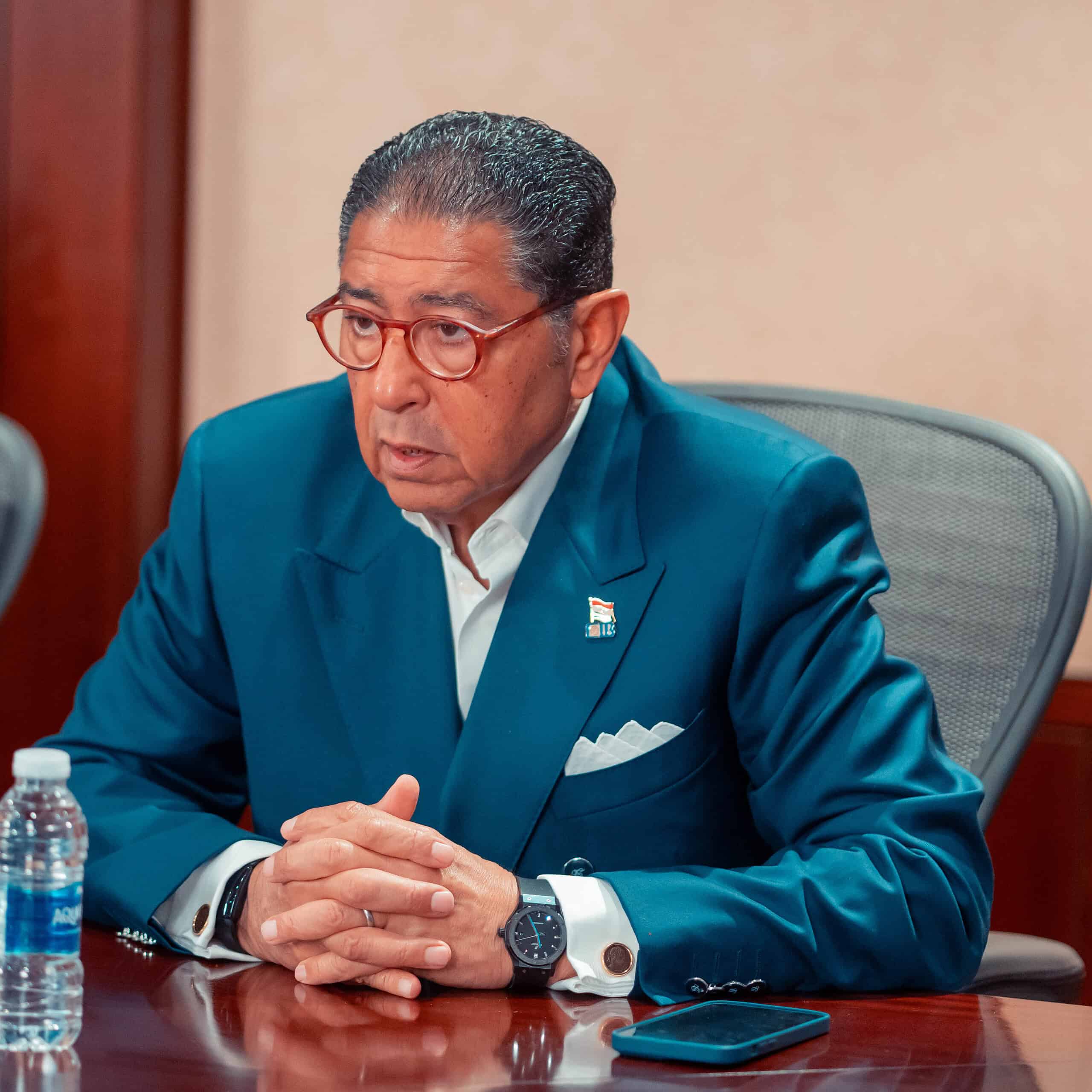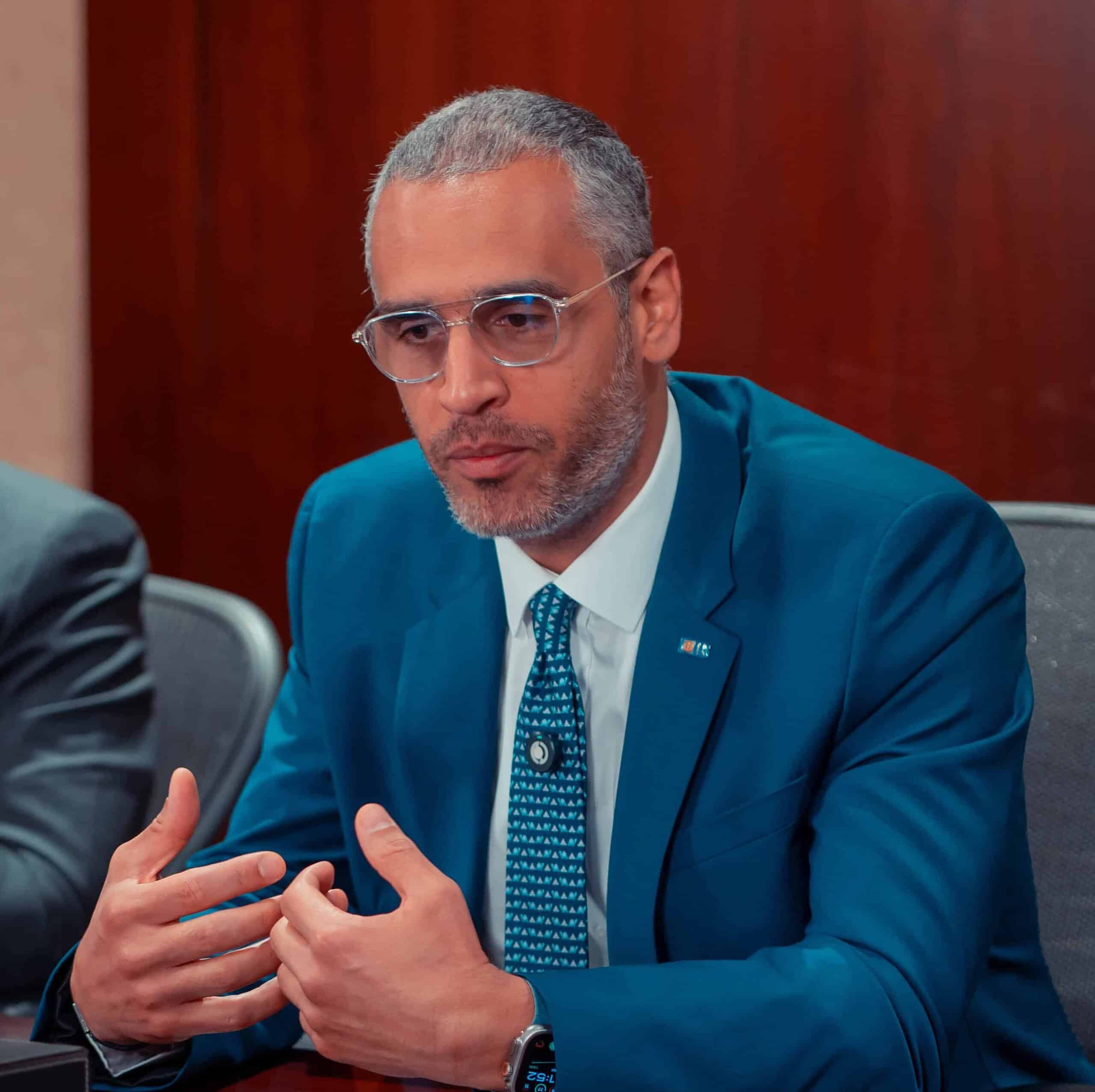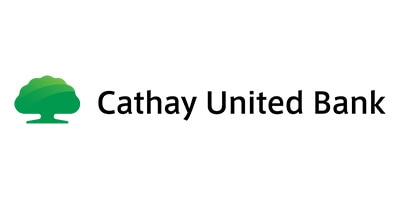Digital Banking, Sustainable Finance & Africa Expansion
At a roundtable at the bank’s headquarters in Cairo, CIB’s leadership team discusses expansion in Africa, commitment to sustainable finance, growing digital banking tools, and the future for the bank.
Global Finance celebrated the 50th anniversary of Commercial International Bank (CIB), Egypt’s largest private sector bank and a driving force in the transformation of Egypt’s banking sector, by holding a roundtable discussion.
The event, hosted at CIB’s headquarters in Cairo, gathered the bank’s top leadership team to discuss the bank’s history, how CIB has positioned itself as the leader in Egypt’s banking sector, and how it will continue to pursue growth while delivering innovative banking services for its clients.
The panel included:
- CEO and Executive Board Member Hisham Ezz Al-Arab
- Deputy CEO and Executive Board Member Amr El-Ganainy
- Group Chief Finance and Operations Officer and Executive Board Member Islam Zekry
- Global Markets CEO Omar El-Husseiny
- Chief Retail, Commercial Banking, and Financial Inclusion Executive Rashwan Hammady

Hisham Ezz Al-Arab | CEO
Hisham Ezz Al-Arab was reappointed CEO of Commercial International Bank (CIB) – Egypt in September 2024. With over 40 years of international banking experience, he has served as CIB’s chairman (2023-2024), and as Chairman and MD (2002–2020). He also founded and chairs the CIB Foundation, which provides healthcare access for over 7 million underprivileged Egyptian children.
Global Finance: What major milestones has the bank achieved over the past 50 years, and what are some of the lessons learned?
Hisham Ezz Al-Arab: Well, you have to give credit to National Bank of Egypt (NBE) and Chase Manhattan for setting up CIB back in the 1970s, because it changed how commercial banking is being conducted. CIB at the time it was Chase National Bank—was the leader in credit lending. They changed the concept of asset lending into cash flow lending, and that was new. People used to lend against collateral and not against expected cash flow; that was a major change in the way of thinking. This was the tip of the iceberg that led the change. Below that there’s a very solid culture, to accept change, to innovate, to have something new all the time, and that carried on over the years. When I joined the bank in 1999, it was one of the large private sector banks. The management at the time and the board decided that we needed to make what you call a “major change.” We needed to be market leaders, and this was the time the bank made a lot of changes. From 1999 until about 2004, CIB was a market leader, applying all international standards and doing things really not required by domestic regulation but applied internationally.
CIB was the market leader in implementing the Basel III requirements in 2012 for asset liability management, not only for the credit flow and cash flow lending. We started to move to other areas of the commercial economy. Establishing for instance the World Risk Committee, Governance Committee, Immigration Committee, Illumination Committee—all of those things were not required by the Egyptian Law.
In 2005, NBE exited from CIB. We were very meticulous, as a board to make sure that the buyer would add value. And this is where the other journey started, in 2006. A consortium led by Ripplewood in the US became the key shareholders, with three representatives on the board. And this is another era when the bank started to change. We had solid board members who added a lot of value, selecting board members meticulously became a part of our culture. When ADQ bought a stake in CIB back in 2022, the quality of the board members was also outstanding. The critical thing is not the money, it’s the contribution of the board members.

Amr El-Ganainy | Deputy CEO
Amr El-Ganainy has served as deputy CEO and an Executive Board member of CIB since October 2023. He joined CIB in 2004 as general manager, Financial Institutions Group, and he successfully led the department through his strong business relationships in the market on the local and regional fronts.
GF: CIB has a growing presence across Africa with operations in Kenya and Ethiopia. Tell us about this experience and where the opportunities for further cross-border expansion are.
Islam Zekry: CIB’s expansion into Africa reflects our long-term vision to position the bank as a leading regional financial institution, exporting banking excellence into high-growth, strategically relevant markets. Our cross-border growth strategy prioritizes: sustainable value creation over pursuit of scale for its own sake, digital enablement to overcome infrastructure limitations and accelerate access, and facilitation of intra-African trade and investment flows, leveraging Egypt’s pivotal regional position.
Our ultimate objective is to build a resilient, scalable, and commercially viable cross-border banking model that reinforces CIB’s footprint across the continent.
So for an Egyptian bank operating from Cairo, there are two value corridors we can chase. One is the more-than-famous remittance corridor and the other is the East African trade corridor. This is basically the natural expansion for our corporate clients based here in Cairo, and this is where most of the trade exposure for the Egyptian customer is coming from.
Second, the go-to-market was completely different, because when you approach a country like Kenya, where it’s very cloudfriendly, very digitally savvy, very advanced from a payments perspective, we thought what kind of value we could bring to the market? So we brought cash flow lending and enhanced the quality of the payment processes with our global partners. By the end of the year, we will also introduce private and wealth management services.
We are ready to reposition Nairobi as our East Africa headquarters because of huge operational synergies. It’s not about expanding the footprint or putting another flag on the CIB global map; it is about amplifying Cairo and Nairobi’s synergies. We also set an exploration phase in Ethiopia and some other targets on the east coast of Africa, but what matters for us is the value creation.

Islam Zekry | Group Chief Finance and Operations Officer
Islam Zekry is the group chief finance and operations officer at CIB, serving as an Executive Board director and a member of CIB’s Executive Committee and CIB Kenya’s board. He joined CIB in 2004 and became its first chief data officer in 2016, leading data analytics and quant finance platforms.
GF: And where is the room for growth in Africa or elsewhere?
Zekry: We see strong growth potential across East Africa and tradelinked corridors in Northeast Africa. Beyond the continent, the Gulf markets and selected European hubs with strong diaspora links offer promising opportunities in remittances and digital cross-border services.
What differentiates CIB is our ability to combine deep banking expertise with local market insights, digitally enabled platforms tailored for premier banking services and underserved segments, and a client-centric model integrating transaction banking, advisory, and customer advanced and tailored solutions.
As an example, in Kenya, we’re enhancing SME lending through digital partnerships, leveraging the country’s well-developed ecosystem. We’re also advancing digital channels to scale access and deepen client engagement.
Al-Arab: Regional expansion is also about Egyptians outside of Egypt. How can we reach them and how can we facilitate their banking transactions? That’s something that is critical for our future banking services.
GF: Sustainable finance has been a true commitment for CIB. Tell us about the bank’s major achievements in this sector and CIB’s commitment to integrating sustainable finance across the board.
Amr El-Ganainy: CIB launched the first corporate green bond in Egypt, with a value of $100 million. This was a landmark transaction in Egypt and was important in supporting Egypt’s transition to a greener economy. Our aim is to play a pivotal role for all companies, and we are committed to helping the private sector transition to a more carbon-neutral future.
Zekry: At CIB, sustainable finance is not treated as a side initiative, it’s at the core of how we operate and grow.
When we partnered with the IFC to issue Egypt’s first green bond, that was virtually unheard of at the time. Today, that kind of financing is embedded in our business model. In fact, when we launched our five-year strategy just last week, ESG wasn’t a separate chapter, it was present throughout.
As we expand across Africa, a significant share of our growth will come from transitional finance, particularly in agricultural and underserved communities. We’re introducing specialized services in these areas: not just as a development goal, but because they make strong business sense.
Even internally, we’ve evolved how we assess performance. For example, our Green Asset Ratio is now a core part of our capital adequacy review, with a clear target to grow it by additional 1% to 2% annually. That’s how seriously we take it.
And to be clear, this is not just a corporate responsibility exercise. It’s part of our value creation strategy. In fact, transitional finance has been shown to deliver enhanced returns, often generating 50 to 100 basis points above conventional lending. So it’s both impactful and commercially sound.

Omar El-Husseiny | Chief Global Markets Executive
Omar El-Husseiny is the Chief Global Markets at CIB and a member of the Bank’s Executive Committee. As Chief Global Markets, he is responsible for key strategic areas including Financial Institutions, Debt Capital Markets, Treasury, Enterprise Governmental Relations, and Global Transaction Banking, ensuring alignment with the Bank’s broader growth agenda.
Mr. El-Husseiny spent his career at CIB, having joined after completing his Bachelor of Business Administration at the Faculty of Commerce at Cairo University in 2001. He holds an MBA in Banking and Finance from the Maastricht School of Management (MsM) and a Graduate School of Banking Diploma from the University of Wisconsin, Madison. In 2019, he completed the Corporate Finance & Credit Program at J.P. Morgan.
GF: Another item on top of the agenda, naturally, is digital banking and transformation. Walk us through CIB’s digital journey.
Rashwan Hammady: Our penetration of digital products across the base, whether in the consumer part, commercial banking, or SMEs or corporate banking, continues to grow over the past couple years. We’ve reached a stage where digital isn’t just about technology, it’s about understanding human needs and behavior. Our core focus now is reshaping our internal culture to understand and serve the next-generation consumer, those who are digitally native, community-led, and brand-critical. Gen Z and digital entrepreneurs will shape the next 20 years of financial services. Our job is to anticipate, not react to, how they live, earn, and make decisions. We’re embedding design thinking, real-time analytics, and personalization into our operating model. It’s less about digital “products” and more about building bespoke and lifestyle-driven experiences.
Omar El-Husseiny: Combining digital transformation and international expansion is no longer a luxury; as a financial service provider, it’s a must. This is where we see the bank moving forward. This is the only way we can expand locally and internationally, therefore, maximizing shareholder value. One takeaway from the past 50 years is how the bank continuously adapts to evolving trends and developments.
GF: How do you use digital tools to target regional expansion?
Al-Arab: For now, there are certain regulatory requirements that we are working on with the regulator, and when that is completed, it will allow us to provide services for individuals overseas. We want to do it seamlessly: simple, easy. The idea is that you are sitting on your sofa somewhere and you want to send money to your family. You don’t need to go to the bank. You want to pay your bills? You don’t need to travel. You don’t even need to make a phone call. It’s a new lifestyle. If you don’t keep developing, you will be left behind.
One thing I want to stress is that CIB is an Egyptian company. Apple is an American company. Where do you manufacture your product? That’s irrelevant. The idea that because we are an Egyptian company, we have to be local and not use the world to grow our market, is wrong. We have to use the world.
Hammady: We were one of the first players in the mobile wallet space. We’ve acquired more than 1.5 million customers via CIB’s mobile wallet. Our strategy now is more geared towards partnerships; we don’t need to build everything. So that maybe we’ll be the manufacturer of products and digital assets and a partner will be responsible for distribution, service, and access. True financial inclusion isn’t about opening accounts, it’s about changing behavior. We’ve realized that literacy and trust gaps in Egypt require a hybrid approach, yes, but more importantly, we need localized design experience. That’s why we’ve built a partnership model where we develop financial products while distribution and education are handled by partners with community reach.
This is how we unlock scale: regulatory-grade infrastructure with grassroots access. The WE partnership will bring banking to millions of new users. They have more than a thousand branches, and this partnership helps us promote financial inclusion across the country. We are expecting to launch that within the coming six to nine months, and that will cater to millions of customers, especially in non-urban communities, small cities, and villages across the country.
El-Husseiny: Egypt’s economy continues to rely heavily on cash transactions. This reliance places additional pressure on the money supply and constrains tax revenue collection, exacerbating inflation and expanding the budget deficit. Therefore, encouraging financial inclusion and digital transformation benefits CIB and the banking sector and is critical for border economic prosperity.

Rashwan Hammady | Chief Retail, Commercial Banking and Financial Inclusion Executive
Rashwan Hammady is chief retail, commercial banking and financial inclusion executive at CIB. With over two decades of experience at the bank, he has spearheaded the launch of several landmark and innovative products and segment propositions, enhancing CIB’s ability to serve its growing customer base of over 3 million clients.
GF: You were mentioning partnerships. Are we talking partnerships with fintechs? With other players? How do you choose your partners?
Hammady: Our philosophy is simple: We build bespoke, compliant, scalable financial infrastructure and services; our partners provide complementary customer reach and engagement. Whether it’s telcoms, e-commerce platforms, or government entities, we choose collaborators who already command trust and attention across Egypt. This allows us to plug into ecosystems where our products become invisible, but indispensable. We’re now scaling this partner-led model not only in Egypt but also as part of our pan-African expansion.
Zekry: Our partnership model is quite unique in that it brings together three core pillars: data, digital, and design.
We’re data-driven, always seeking deeper insights into customer behavior and proactively working to enhance demand capacity. We’re digital by design, using technology to extend our reach and optimize cost-to-serve, especially in high-potential but underserved markets. And we focus strongly on experience design, because we believe that how customers engage with banking still matters, perhaps now more than ever.
When it comes to choosing partners—whether fintechs, infrastructure providers, or even talent networks—we look for alignment on those three dimensions.
We’re also deeply committed to building from the region, for the region. The team here is working tirelessly to reverse the brain drain—attracting top talent from Egypt and across Africa—to help build the banking operating system of tomorrow. We see partnerships as tactical and strategic enablers of long-term innovation.
GF: How is AI opening new doors?
Zekry: While AI has been around conceptually since the 1960s, what’s fundamentally different today is that we’re finally placing these technologies in a meaningful economic and operational context. We’re using AI and data analytics not just to automate, but to understand customer behavior, personalize services, and improve decision-making at scale.
At CIB, we’re investing heavily in building a group-wide data infrastructure: not only in Egypt, but across our African footprint. One clear opportunity lies in streamlining KYC and compliance processes. By creating an integrated data warehouse and sharing verified customer intelligence across our markets, we expect to reduce the cost to serve by 20%-30%. To put that in perspective, I recently came across a study citing EGP2 billion in redundancy costs from duplicative KYC efforts in London’s financial sector. Now imagine the potential savings if we could address that at a pan-African scale. The impact is enormous.
GF: What is the future of CIB?
El-Ganainy: Being Egypt’s largest publicly listed firm and the country’s leading private bank we set our strategy not only to respond to the opportunities emerging today, but to actively shape the Egypt of tomorrow.
We are the leaders in Egypt, and the future is expanding our leadership and investments across Africa and the Middle East.
Zekry: I see CIB evolving into a true business platform: not just in the digital sense, but as a regional and global enabler of investment, innovation, and growth.
We aspire to be a platform that attracts capital, connects businesses, and delivers a new standard of banking experiences—all while being proudly rooted in Egypt. Whether it’s manufacturers expanding from Egypt to the world or clients across Africa and beyond accessing seamless financial services, CIB will be there: facilitating, enabling, and leading.
The future of CIB is not only about being a great bank, but about becoming a trusted gateway to opportunity: for customers, investors, and the economies we serve.
El-Husseiny: I joined the bank 23 years ago, at a time when most of our work was conducted on paper. I’ve taken part in a remarkable transformation, from manual processes to desktop computers, and eventually to digital-first services. CIB will continue to be Egypt’s leading private-sector bank, and our ambition goes beyond national borders. What sets us apart is our ability to adapt to customers’ evolving needs. It’s not just about providing exceptional banking services; it’s about being a trusted financial advisor.
Integrating AI and technologies into our operations is essential. What endures is the customer experience. People will continue to need physical bank branches. CIB has significant room to grow in Egypt. During our strategy process, we asked our staff where they envision the bank in the next 5,10,20, or even 50 years.
The vast majority of our team shared a common vision: we have spent the past 50 years building a strong and successful institution in Egypt, and for the next 50 years, it’s time to expand beyond our borders. As we have developed a proven model, it is time to take that knowledge and expertise abroad, creating shared value through knowledge exchange. Expanding internationally aligns with diversity- a core element of our culture.
We’ve been very successful over the past 50 years in cultivating diversity in Egypt. It’s time to take that success global, where we believe we have the experience and strength to compete.
Hammady: Innovation, for us, is the art of institutional selfdisruption. Over the last decade, CIB has reinvented its business model multiple times: from a corporate-first bank to an inclusive, data-led, multi-segment powerhouse. We are now moving toward a model where the bank is a modular service provider, able to plug into ecosystems across borders. My belief is that our next evolution will see us not only as a bank but as a financial operating system for the region.
Al-Arab: The thing I tell the team and my colleagues is: We are as good as our dreams. You dream small, you remain small. You dream big, you will get there. Be ambitious.




